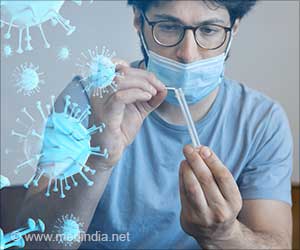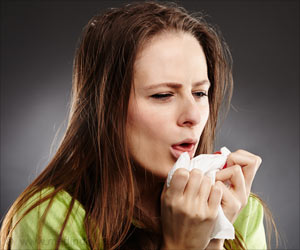The rapid antigen test is quicker but has higher false negatives and positives. Scientists have also developed breathalyzer-type tests for COVID-19, which rely on differences in concentrations of volatile organic compounds exhaled by those infected with the coronavirus, but most require bulky, nonportable instruments for analysis.
Xing Yi Ling and colleagues wanted to develop a quick, convenient and accurate breathalyzer test suitable for on-site screening of large numbers of people.
The researchers designed a handheld breathalyzer that contains a chip with three surface-enhanced Raman scattering (SERS) sensors attached to silver nanocubes.
When a person exhales into the device for 10 seconds, compounds in their breath chemically interact with the sensors. Then, the researchers load the breathalyzer into a portable Raman spectrometer that characterizes the bound compounds based on changes to the molecular vibrations of the SERS sensors.
The team found that Raman spectra from COVID-positive and -negative people were different in regions responsive to ketones, alcohols and aldehydes, which they used to develop a statistical model for COVID diagnosis.
They tested the breathalyzer on 501 people in hospitals and airports in Singapore, who RT-PCR showed to be negative (85.2%), positive and symptomatic (8.6%), or positive and asymptomatic (6.2%) for the coronavirus.
The method had a 3.8% false-negative and 0.1% false-positive rate, comparable to RT-PCR tests, but it could be completed on-site in less than 5 minutes. The researchers say that the breathalyzer could someday be a new tool to reduce the silent spread of COVID-19 in communities.
The authors acknowledge funding from the National Medical Research Council, Singapore, A*STAR Singapore, the Max Planck Institute-Nanyang Technological University Joint Lab and Nanyang Technological University.
Source: Medindia



